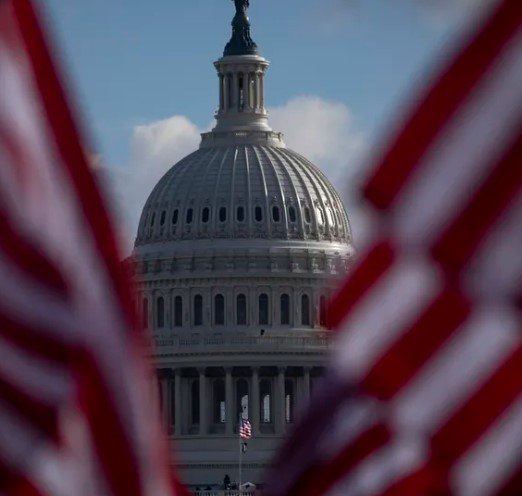Republicans have successfully flipped the U.S. Senate after securing crucial victories in Ohio and West Virginia, according to projections by The Associated Press. This pivotal shift leaves the control of the House of Representatives still uncertain as uncalled races linger.
A New Senate Majority
The Republican resurgence in the Senate follows a well-executed strategy, showcasing their ability to reclaim power. New Republican senators Bernie Moreno in Ohio and Jim Justice in West Virginia were key to this flip, with projections also suggesting that Montana’s Senate seat, currently held by Democrat Jon Tester, could shift toward the GOP.
Senate Republican Whip John Thune expressed optimism about the party’s future direction. In a statement, he said, “Tonight, with Republicans reclaiming majority control of the U.S. Senate, we can begin to turn the page on this expensive and reckless chapter of American history.” His confidence reflects a broader sentiment among Republicans, who are eager to advance their legislative agenda.
The Senate map is still in flux, with several races yet to be called. Competitive races in Arizona, Michigan, Nevada, Pennsylvania, and Wisconsin could further bolster the GOP majority. Each uncalled seat carries significant implications for the party’s influence in shaping policy over the next two years.

Implications for the New Congress
The outcomes of the recent elections set the stage for two potential scenarios for the upcoming 119th Congress, which will convene on January 3, 2025.
- Divided Congress: If Democrats manage to flip the House while Republicans regain the Senate, we will see a split in control, which typically leads to more negotiation and bipartisan deals.
- Unified GOP Control: If Republicans maintain their majority in the House and also control the Senate, this could facilitate a more streamlined legislative process, though it will depend heavily on who occupies the White House.
The political dynamics of a divided Congress would require the next president to make concessions and seek cooperation across party lines to advance key legislation. Conversely, unified control would allow for quicker movement on initiatives, particularly regarding judicial appointments and confirmations, which are critical in shaping the judiciary’s future.
Newly Elected and Reelected Senators
The election results revealed a mix of new faces and returning incumbents. Newly elected Republican senators include:
- Bernie Moreno in Ohio
- Jim Banks in Indiana
- John Curtis in Utah
- Jim Justice in West Virginia, flipping Joe Manchin III’s seat
On the Democratic side, notable wins included:
- Angela Alsobrooks of Maryland, making history as the first Black woman elected to the Senate from the state.
- Andy Kim from New Jersey, becoming the first Korean-American senator.
These elections represent significant shifts, particularly for underrepresented groups in Congress. Peters, chair of the Democratic Senatorial Campaign Committee, emphasized the historical nature of Alsobrooks’s win, stating, “Angela is no stranger to breaking barriers.”
The House of Representatives in Flux
While the Senate results are clearer, the House remains a complex puzzle. As of early Wednesday, 321 out of 435 House races had been called, but many toss-up races were still too close to call. This uncertainty makes it challenging to predict the party that will control the House.
Sarah McBride is poised to make history as the first openly transgender person elected to Congress, a victory celebrated by the Human Rights Campaign, highlighting a significant cultural moment in American politics. The organization praised her as a devoted public servant who will effectively represent her constituents.
In the face of uncertainty, both parties are keeping a close eye on critical districts that could swing the balance. Arizona’s 1st and 6th Congressional Districts, as well as Pennsylvania’s 10th Congressional District, are among the races being monitored for any major surprises.
The Future Legislative Landscape
The implications of the recent elections extend beyond party control; they signal a critical juncture for the next president’s legislative agenda. The Senate’s role in confirming Cabinet appointments and judicial nominees underscores the significance of this newly regained Republican majority.
As races continue to be finalized, both parties are preparing for the next phase of governance. The political landscape is shifting, and leaders are already positioning themselves for the legislative battles ahead. With Republicans now in control of the Senate, their ability to enact their policies will hinge on collaboration and negotiation, especially if they face a Democratic president.

Comments